We recently connected with Amanda Crary and have shared our conversation below.
Alright, Amanda thanks for taking the time to share your stories and insights with us today. Can you talk to us about a project that’s meant a lot to you?
When I was in graduate school, I spent a lot of time turning my creative process inside out and exploring new ways of “making something.” Instead of picking up a paintbrush and making a painting, I began to search for other ways to convey meaning. A lot of the themes I was interested in at the time were about fleeting moments, togetherness, and gestures of love and care.
One project involved working with a community group to celebrate the lives of those who have been affected by AIDS. For this project, I made a bunch of homemade paper and envelopes. In a quiet, sacred room, at a homemade table, people were invited to write a letter to someone affected by AIDS. This project was meant to be cathartic and special for the writer–a ceremony of thoughtfulness and love.
Another project embedded with meaning was called The Quilt Project. In this project, I sewed together tons of thrifted and donated blankets. I invited the community to help me stitch it together; in the end, the giant quilt was placed in the center of downtown (Greensboro, NC), inviting people to sit down together and have something to eat. The purpose of this project was to bring together many different people in one place–on a shared blanket, sharing food. Both of these larger community projects can be found on my website.
These days, my projects are scaled back and they’re much smaller–but I find that they’re still woven with meaning. Through sewing paper together, making collages, and painting, I’m still chasing fleeting moments, togetherness, love and care. To me, quilts and things sewn or mended embody care, love, safety, and usefulness. I’m also deeply enamored with the color blue. To chase this color, I’ve been exploring the cyanotype process, which allows me to achieve a very deep, rich blue. Blue symbolizes expansiveness–and also the blue found at the edge of the horizon–“the blue where you cannot go,” says the writer, Rebecca Solnit. This idea of the color blue has occupied me for years. I’ll continue to chase it.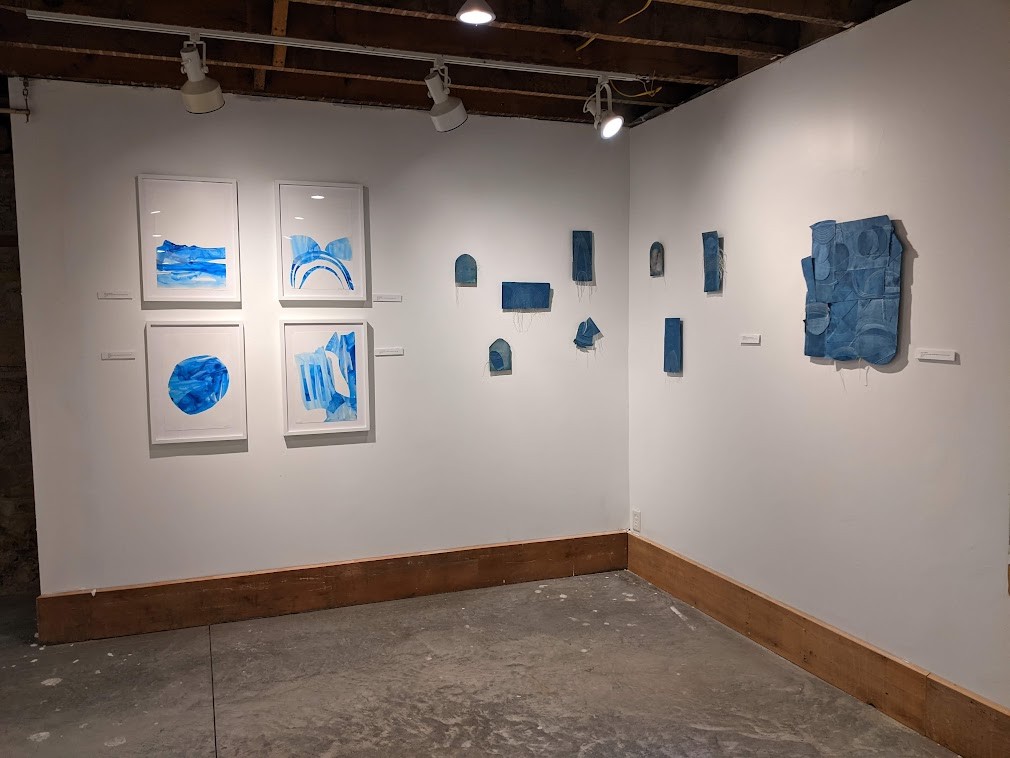
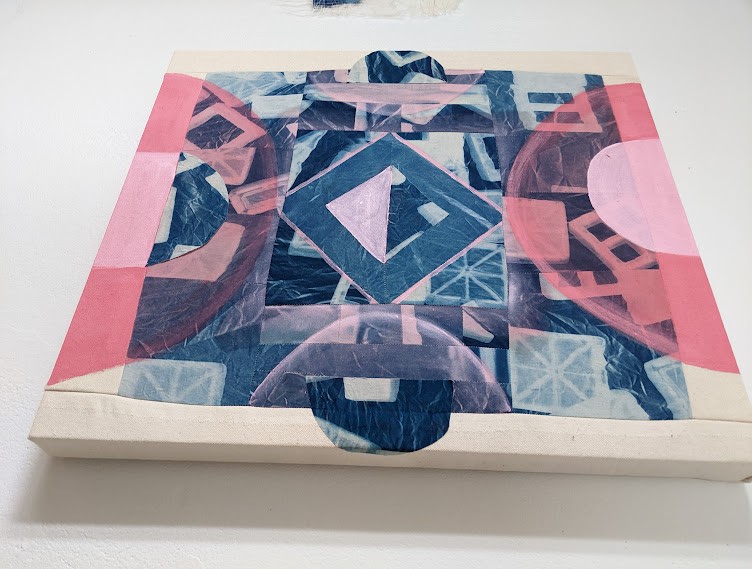
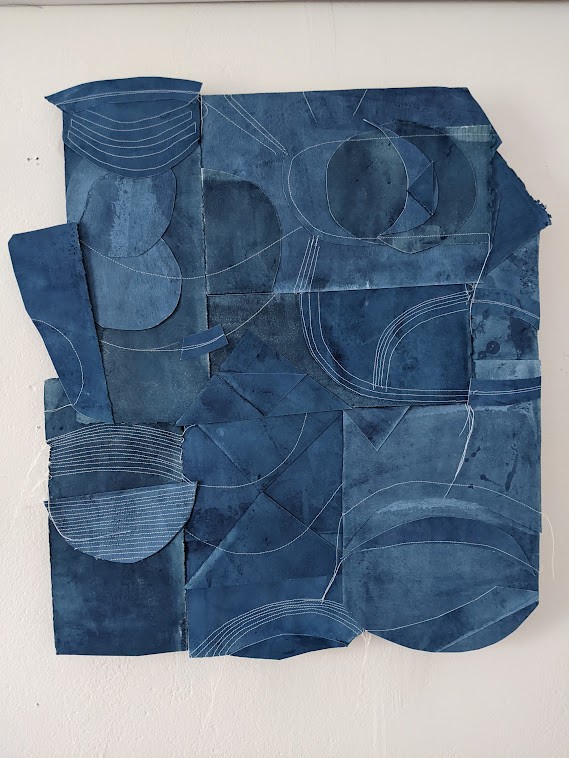
As always, we appreciate you sharing your insights and we’ve got a few more questions for you, but before we get to all of that can you take a minute to introduce yourself and give our readers some of your back background and context?
I’ve been an artist and interested in making things since I was a child. I grew up in a very small town (New Glarus, WI) and it’s here where I was encouraged from a very young age by my teachers and parents to continue making and exploring art.
I know college isn’t for everyone, but I knew in my bones that I wanted to continue school; I love learning. A risk I took was deciding to study art in college. At first, my major was Public Relations/Mass Media–something that would allow me to “get a job.” After feeling super uninspired by my course load and seeing students walking around campus with giant sketch-pads and paintbrushes, I knew in my guts that I needed to switch majors. Can you become an artist without an art degree? Absolutely. But–I really wanted to study art (and art history) and I’m so thankful that I did. I adored and idolized my instructors, their knowledge, their interest in education and sharing things with students, yes, but most importantly, their drive and passion for their own art practice and creative process; I wanted that, too. To this day, so many years later, I’m still in touch with them.
I decided to continue my education further by going to graduate school. The MFA is quite intense; different programs exist all across the globe. I didn’t get accepted right away–which was a huge lesson for me in perseverance, problem-solving, and taking more time to build up my art practice. During this interim time, I also gained teaching experience–which turned out to be an eye-opening experience where I realized that someday, I’d like to become an art educator. Eventually, I moved across the country for my MFA, where my practice grew into areas and ideas I never anticipated–grad school shakes you up a bit. As an abstract painter and printmaker with an interest in installation art, my practice evolved and morphed into sculpture, sound, and performance. I like to describe the MFA as a “bubble world,” — a world in which everything is intensified and everyone around you is ruminating on the same wavelength of art and meaning and process and materials. Afterwards, it felt shocking to leave this experience. It took some time to adjust to “real life” on the outside.
Someone once told me that only 10% of your cohort from art school continues to make art 5 years after graduation; I was determined to continue making things–not just because of the statistic, but because I’ve turned to art my entire life. I’ve continued my art practice and it has continued to change as my life has changed. Since becoming a mother, I’ve been more interested in returning back to objects made with my hands, like paintings and collages, instead of performance and sound art. The scale of my work shrunk as time and space demanded. After my amazing MFA studio space, I worked from our kitchen table. A definite shift, but also, doable.
Currently, I teach painting, printmaking and design at Carroll University (Waukesha, WI); I’m also the curator of galleries and collections. Beyond teaching, I continue my art practice–which these days consists of exploring quilting, painting, cyanotypes, dying paper and collages. Much of my current work is interwoven with themes of motherhood, abstract landscapes, and the beautiful yet tumultuous world around us–and in us.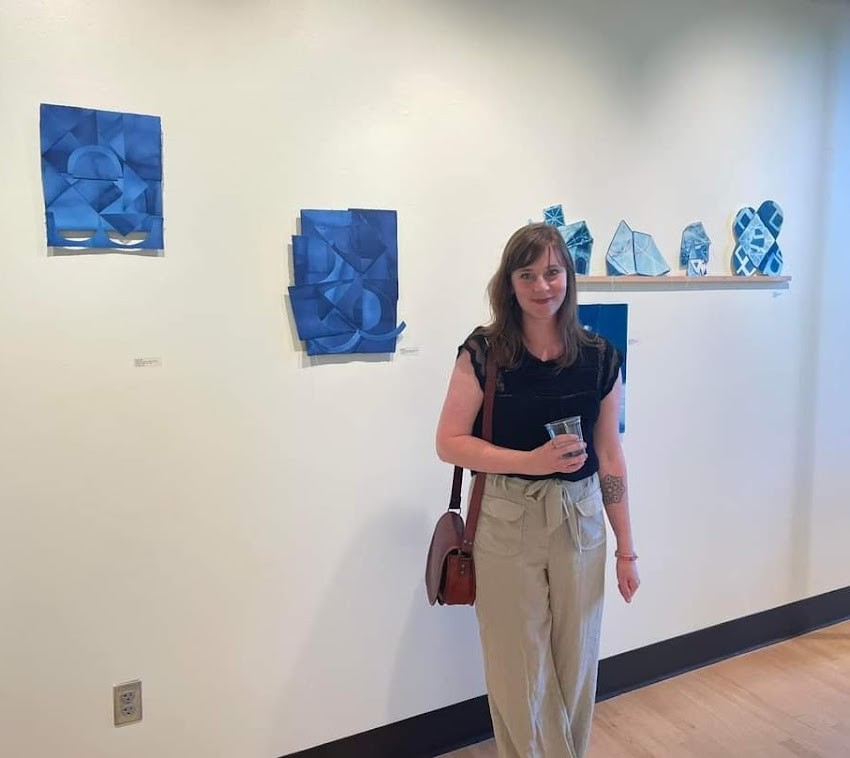
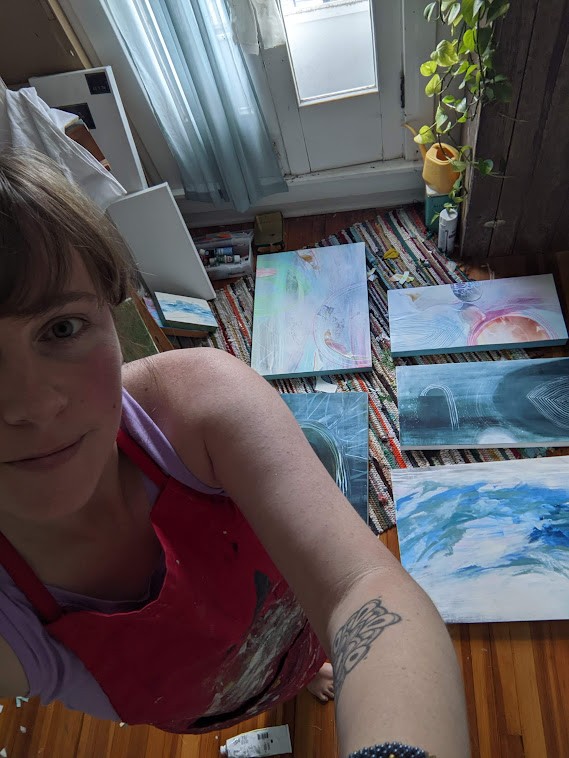
What’s the most rewarding aspect of being a creative in your experience?
For me, the most rewarding aspect of being an artist is being able to be completely swallowed up within the process of making something. There is a magic that happens when an artist is in the flow of creating something. Sometimes it’s the joy of experimentation and other times it’s the satisfaction of following through with an idea that’s been in your head and heart for so long.
Another rewarding aspect of being an artist is getting accepted into exhibitions and solo shows. It’s very fulfilling to see your artwork in a new space surrounded by viewers and new people. There’s a buzz, an energy, that permeates the space.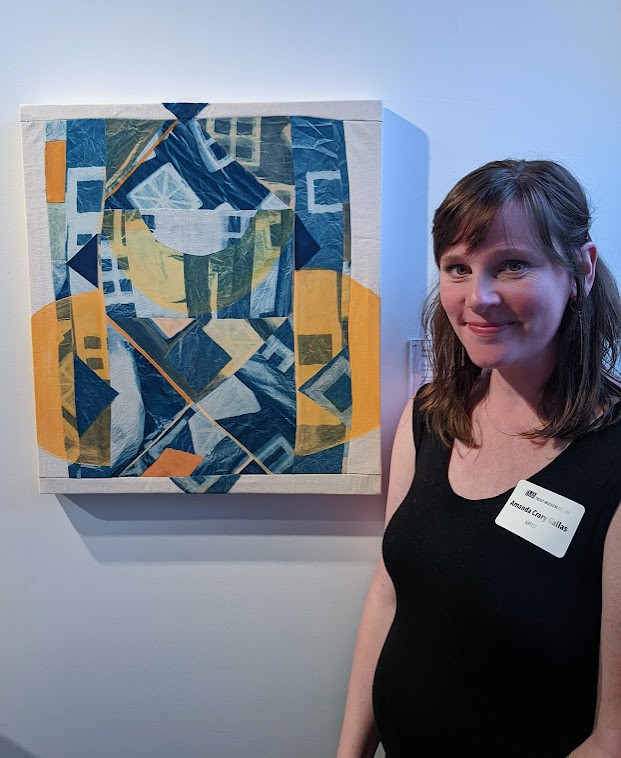
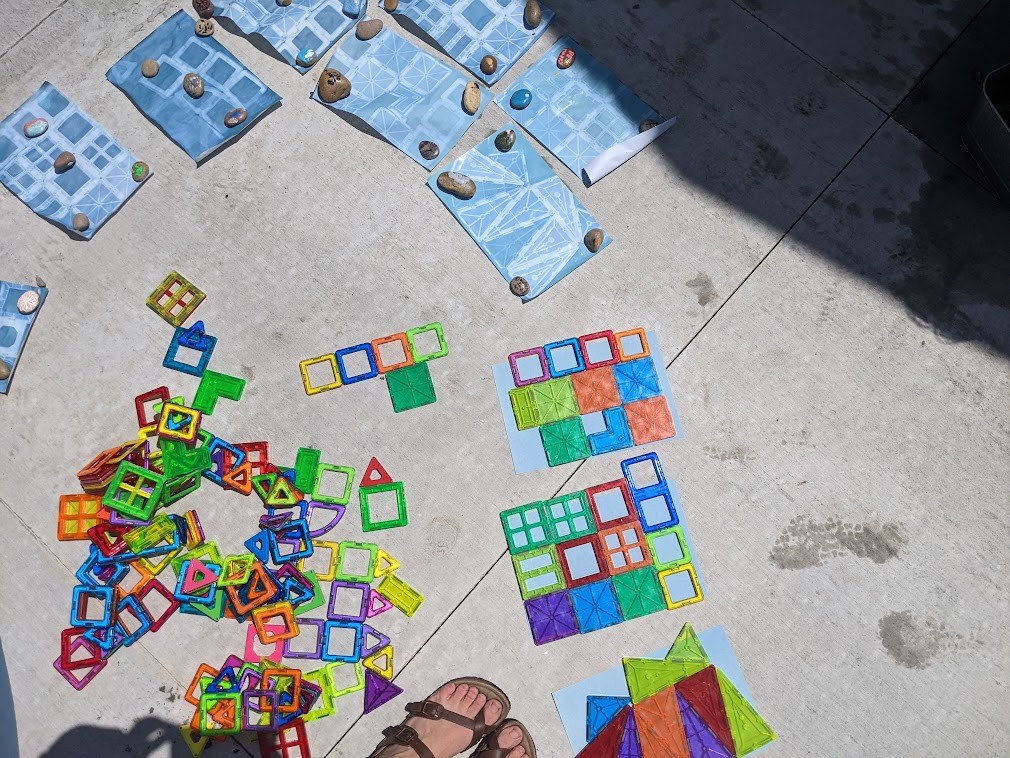
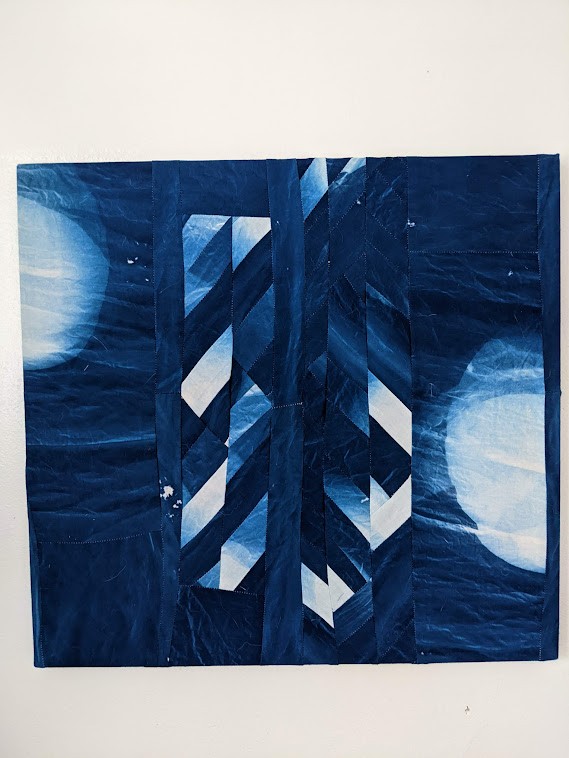
Is there mission driving your creative journey?
The goal and mission driving my creative journey is to remain true to my voice and my experiences. My voice has always been quiet–and I make art about that. My voice has also changed as my life experiences continue to tumble onward and forward. Motherhood and my experiences related to that have shifted my internal compass a bit; I’m still after solitude and expansion, which I’ve explored in previous abstract landscape paintings–but now, the solitude and expansion feels more internalized–within the landscape of my body and mind. As a caregiver, what does it mean to be or feel expansive? I’m also more interested in materiality lately–I’m drawn to textiles, quilts, blankets–items that reference care, touch, covering, and love. I’m looking forward to seeing how my practice continues to change throughout my life.
Another goal and mission is to give myself the permission and freedom to experiment, play, and tinker with ideas and materials. It is a very freeing reminder that not every piece of art has to be a masterpiece–artists need to make a lot of crappy things to figure out their ideas and process. Is it frustrating to spend time making something that doesn’t turn out? Oh yes. But, eventually, things evolve, shift, explode or grow in ways unanticipated–and it is joyous.
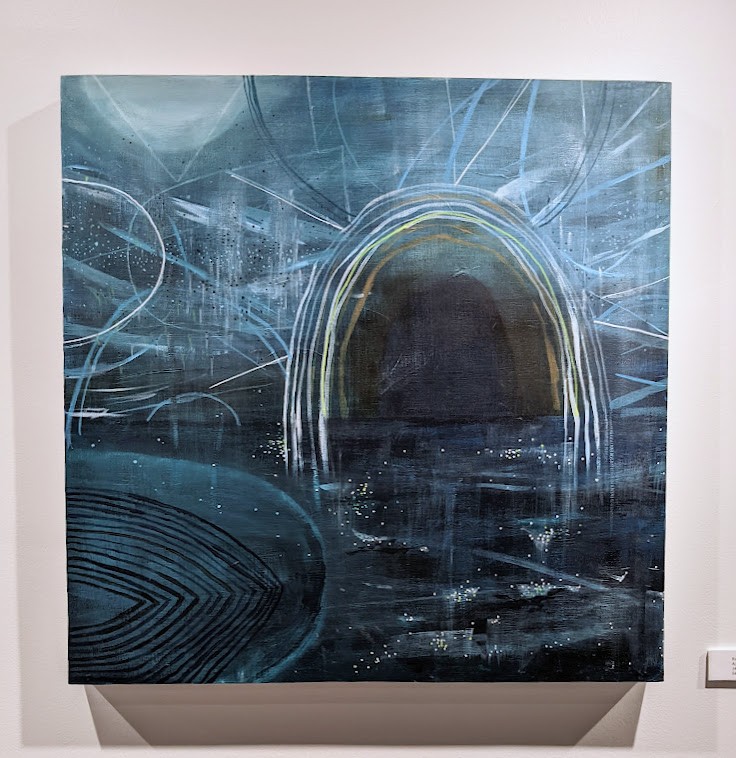
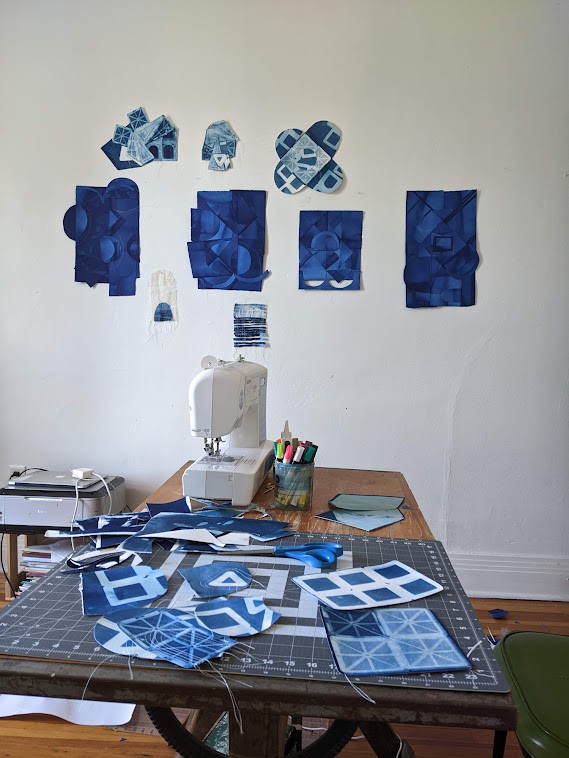
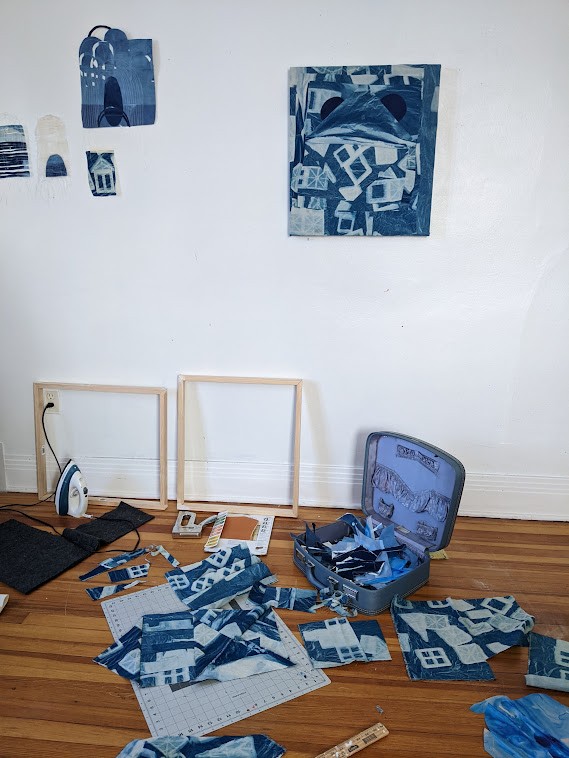
Contact Info:
- Website: http://amandacrary.com/
- Instagram: https://www.instagram.com/amandacrary_studio/
Image Credits
Amanda Crary


